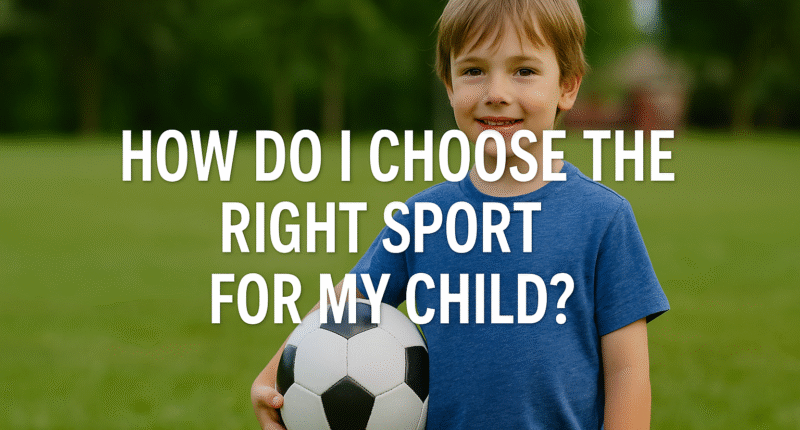Introducing your child to sports is one of the best ways to support their physical health, social development, and confidence. However, with so many sports to choose from, parents often wonder: “How do I choose the right sport for my child?” The answer depends on their interests, personality, and physical abilities. Here are some practical tips to guide you.
Consider Your Child’s Interests
The first step is to understand what your child enjoys.
Let Passion Lead the Way
If your child loves running around outside, soccer or athletics might be a good fit. If they enjoy music and movement, dance or gymnastics could be ideal. When children are genuinely interested in a sport, they are more likely to stay committed and have fun.
Match Sports to Their Personality
Different sports suit different personalities.
Team vs. Individual Sports
Outgoing children who enjoy teamwork may thrive in soccer, basketball, or volleyball. On the other hand, kids who are more independent may prefer individual sports such as swimming, tennis, or martial arts. Matching their personality with the sport helps them feel more comfortable and confident.
Think About Age and Development
Children develop skills at different stages, and some sports are better suited for certain ages.
Age-Appropriate Choices
Younger kids (ages 3–6) often do well with simple, playful activities like swimming, running, or basic gymnastics. As children grow older, they can transition into more structured sports that require strategy and coordination, such as football, tennis, or track and field.
Assess Physical Abilities and Health
It’s important to choose a sport that fits your child’s physical strengths and abilities.
Playing to Their Strengths
Some children may have natural speed, agility, or endurance, while others may excel in coordination or strength. Also, consider any health conditions—such as asthma or joint concerns—when selecting the right activity. Consulting a pediatrician before starting is always a good idea.
Encourage Variety Before Specialization
While parents may want their child to focus on one sport, exploring multiple activities can be beneficial.
Building a Strong Foundation
Allowing kids to try different sports helps them develop a range of motor skills and prevents burnout. Later, when they discover what they truly enjoy, they can specialize in one sport with more confidence.
Prioritize Fun Over Competition
The main goal of introducing children to sports should be enjoyment, not pressure.
Keeping Sports Fun
If kids see sports as fun, they are more likely to stay active throughout life. Avoid pushing them into competitive levels too early; instead, encourage participation, learning, and enjoyment.
Conclusion: Supporting Your Child’s Journey
Choosing the right sport for your child involves balancing their interests, personality, physical abilities, and age. By encouraging variety, focusing on fun, and supporting their choices, you can help your child build lifelong healthy habits and a love for physical activity. Remember, the best sport for your child is the one that makes them happy and motivated to play.








